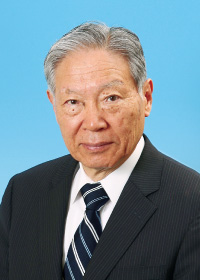
 President Shojiro MATSUURA |
We sincerely thank you for your understanding and continued support of our research and development activities. Since the foundation of the Japan Atomic Energy Agency (JAEA), this publication has been brought out every year with the intention of informing you of the day-to-day accomplishments of the JAEA.
As the only research institute in Japan dedicated to comprehensive nuclear research and development, the JAEA plays a primary role in steadily promoting research and development in nuclear technology and, in the wake of the accident at the Fukushima Daiichi Nuclear Power Station of Tokyo Electric Power Company, Incorporated (TEPCO), has focused on investing efforts toward the recovery of the damaged reactor site and the reconstruction of the affected area. Furthermore, with serious consideration of the fact that we have not been successful in the maintenance of the prototype fast breeder reactor Monju and in preventing the radioactive material leak at the Hadron Experimental Facility of Japan Proton Accelerator Research Complex (J-PARC), we are in the process of promoting activities for establishing a safety culture in accordance with the fundamental policies of Japanese government. Moreover, the employees are working as a unit towards a structural reform for restoring the trust of society in the institute, in accordance with the plan that the JAEA prescribed.
More than two and a half years have passed since the accident at the TEPCO’s Fukushima Daiichi Nuclear Power Station; in this time, the JAEA has been engaged in post-accident environmental remediation and decommissioning of the damaged reactors by fully utilizing the integrated capability of the scientific and technical experts and its research facilities. To deal with the environmental pollution by radioactive materials, Fukushima Environmental Safety Center, of the Headquarters of Fukushima Partnership Operations, has been set up as the base of our operations. Here, we have performed research and development activities such as analyses of soil and water, tests accompanying decontamination such as the control of amount and volume reduction of the contaminated waste from the soil after the accident, demonstration tests on a decontamination model in high-dose regions, and studies on decontamination efficacy evaluation methods. In addition, for research and development related to the decommissioning of units 1 to 4 of the TEPCO’s Fukushima Daiichi Nuclear Power Station, we have promoted tests on the long-term integrity of the fuel assembly in the spent fuel storage pool, the characterization of the fuel debris for the preparation of its removal, and the treatment and disposal of radioactive waste caused by the accident.
For future research and development of the fast breeder reactor cycle technology, including Monju, we will proceed in accordance with the review of the nuclear energy policy of Japanese government. We will prioritize the safety of Monju and will also perform operations management and work toward international standardization of the safety design requirements of fast breeder reactors. Moreover, for the activities on the backend of nuclear energy utilization, which are necessary irrespective of the future nuclear energy policy, we have performed research and development on decommissioning, and the treatment and disposal of radioactive waste.
In the research and development aimed at the practical utilization of nuclear fusion energy, we, as a domestic agency/implementing agency of Japan under roles based on the international framework (ITER Project/BA activity), have been promoting our operations using the world’s most advanced technologies along the plan that the JAEA prescribed. As part of the research and development on quantum beam science, we have been producing a variety of results in areas ranging from the fundamentals of science and technology to industrial applications, through various quantum beam facility groups owned by the JAEA. Moreover, we have recognized that ensuring nuclear safety is an important step in the use of nuclear power, and we have diligently conducted nuclear safety research for the improvement of safety in the utilization of nuclear energy. In addition, we have promoted a wide variety of engineering research activities, which will serve as the basis in the development of nuclear energy utilization in Japan; these activities have led to many accomplishments.
Hereafter, we are steadily proceeding with structural reforms in accordance with the plan that the JAEA has set forth. With the increased expectations toward the JAEA’s role in nuclear technology development after the TEPCO’s Fukushima Daiichi Nuclear Power Station accident, we are now actively involved in medium-to-long-term human resource development for nuclear technology, industry-academia-government collaborations, promotion of international cooperation with overseas research institutes, and the dissemination of the achievements made in research and development, without failing to prioritize operations.
We are pleased that you will gain further understanding of the accomplishments of the JAEA through this publication, and we thank you for your continued encouragement and guidance in our research and development activities.
Next: About This Publication and the Outline of Organization of JAEA>